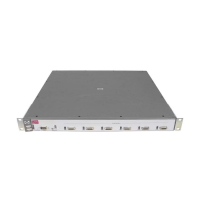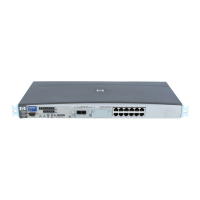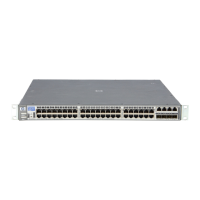2-5
Installing the Switch
Installation Procedures
Installing the Switch
5. Connect power to the switch (page 2-14). Once the switch is mounted,
plug it into the nearby main power source.
6. (Optional) Install or remove mini-GBICs or SFPs (page 2-15). The
switch has four slots for installing mini-GBICs. Depending on where you
will mount the switch, it may be easier to install the mini-GBICs first. Mini-
GBICs can be installed or removed while the switch is powered on.
7. Connect the network cables (page 2-18). Using the appropriate
network cables, connect the network devices to the switch ports.
8. (Optional) Connect a console to the switch (page 2-19). You may
wish to modify the switch’s configuration, for example, to configure an IP
address so it can be managed using a web browser, from an SNMP network
management station, or through a Telnet session. Configuration changes
can be made easily by using the included console cable to connect a PC
to the switch’s console port.
At this point, the switch is fully installed. See the rest of this chapter if you
need more detailed information on any of these installation steps.
1. Prepare the Installation Site
Cabling Infrastructure - Ensure the cabling infrastructure meets the
necessary network requirements. See Appendix B “Cabling and Technology
Information” for more information.
■ Installation Location - Before installing the switch, plan its location and
orientation relative to other devices and equipment:
• In the front of the switch, leave at least 7.6 cm (3 inches) of space for
the twisted-pair, fiber-optic cabling, and cooling. See Figure 2-1 for
the air flow direction.
• In the back of the switch, leave at least 3.8 cm (1 1/2 inches) of space
for the power cord and cooling.
2. Verify the Switch Passes Self Test
Before mounting the switch in its network location, you should first verify it
is working properly by plugging it into a power source and verifying it passes
self test.

